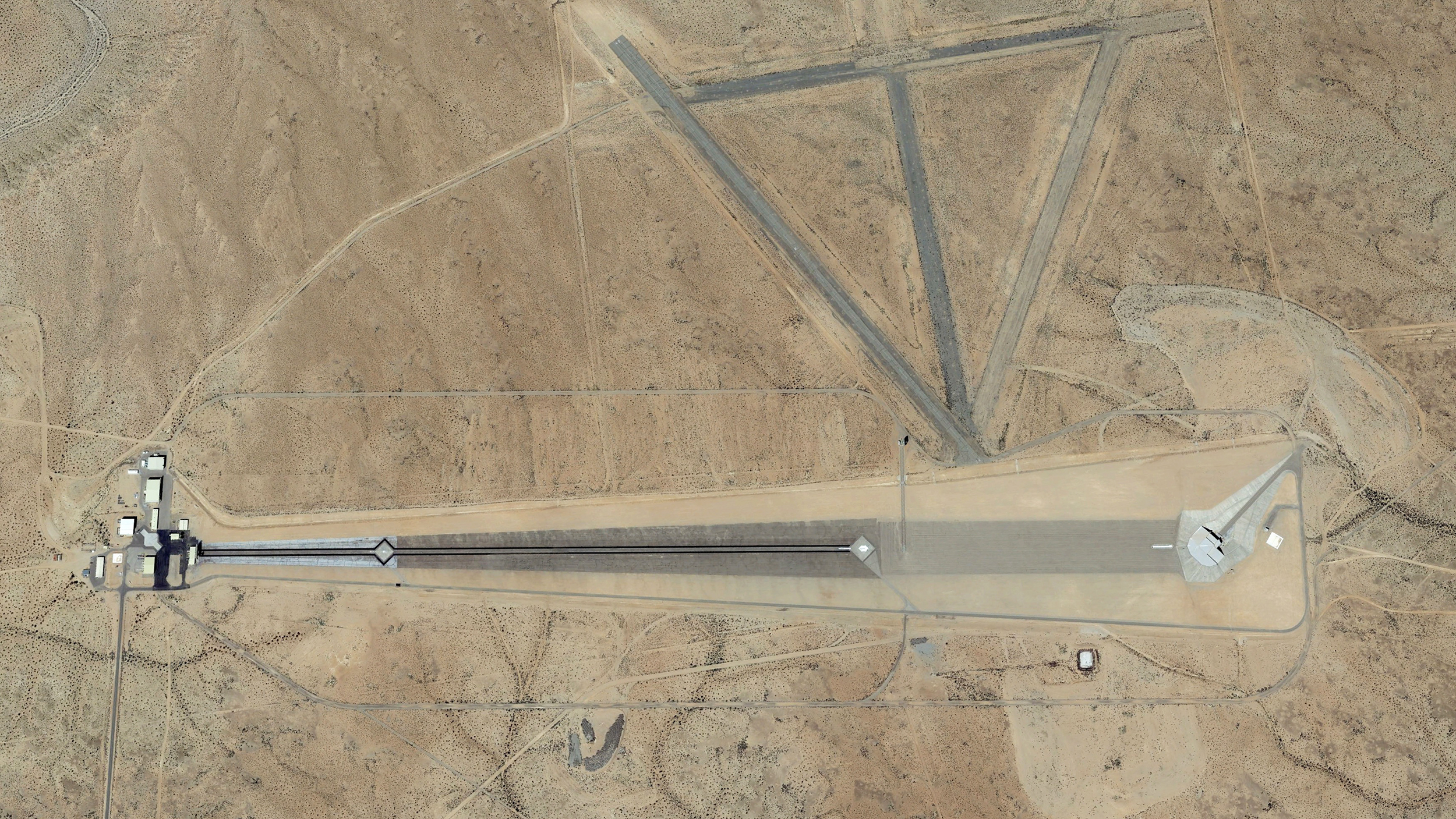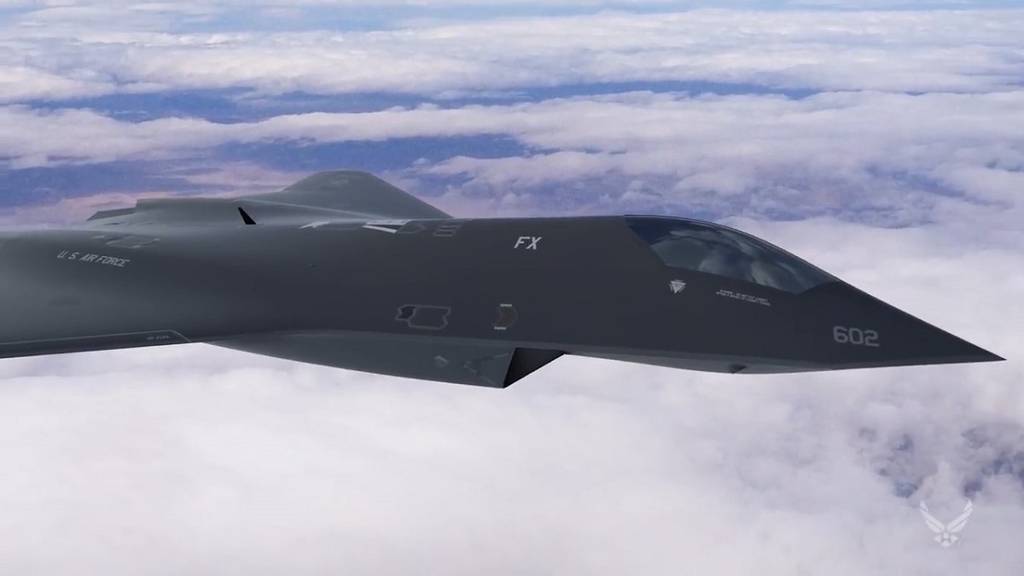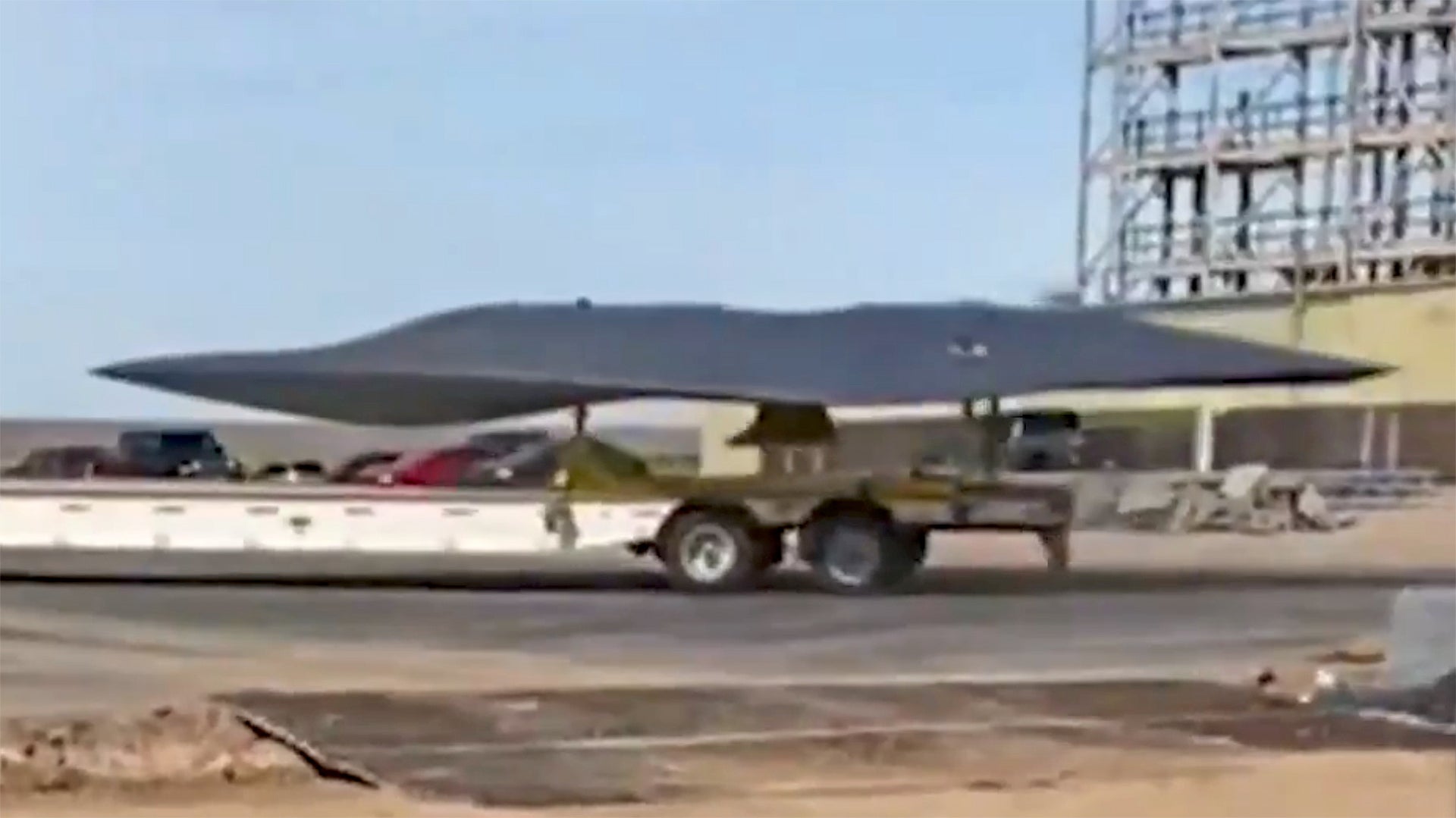An apparently previously unseen low-observable aircraft test shape has emerged, with initial open-source intelligence research indicating it was spotted at Lockheed Martin’s secretive Helendale radar-cross section (RCS) measurement facility. This site, located in the Mojave Desert not far from the company’s Skunk Works headquarters at Plant 42 in Palmdale, California, is among the most sophisticated of its kind and has played a key role in the development of U.S. stealth aircraft since the early 1980s. You can read all about this facility, which looks ripped from a science fiction movie, in this past feature of ours.
While we don’t know what this shape is intended to resemble, it provides a timely reminder of some of the exotic test work that’s clearly going on behind closed doors, at facilities like Helendale and others, on a number of advanced combat jet development programs that we know about, as well as more stealthy aviation work going on in the classified realm.
A short video showing the apparent test shape seems to have been first posted to the TikTok video-sharing social networking service, before being shared on other social media channels. Ruben Hofs brought it to our attention on Twitter. Hofs, who tweets as @rubenhofs, used an open-source intelligence (OSINT) comparison of buildings and foliage in the locale to determine that the video was almost certainly taken at Helendale.
The video itself shows what looks like an inverted stealth aircraft shape being transported on a flatbed trailer, while a voice asks: “What the fuck is that?” As Hofs notes, the shape of the aircraft is very different from typical “pole caps,” which are more familiar test shapes used for calibration of the pylons used in RCS tests at Helendale and other facilities.
Transporting the shape upside-down is also far from unusual for these kinds of tests, since surrogate airframes (and other test articles) are often mounted inverted on the test pylon at Helendale and other similar facilities before being exposed to electromagnetic emissions to measure their radar signature. Alongside many other test facilities, the RCS lab at Helendale occupies a large open area upon which models of aircraft and other test specimens can be mounted on poles, often either consisting of acute angles or made of a radar transparent substance. The test articles can then be exposed to emissions from various radar systems and from various aspects. This is, by its nature, a highly sensitive field of work, and security is typically tight.

The facility has underground areas into which test articles can be lowered when not in use, to hide them from prying eyes. Radar arrays, too, are mounted on hydraulic lifts so they can be raised or lowered, as well as slid into place, as required. Secure storage buildings on site also house test articles when not in use.
A test article for the BAE Systems Replica fighter jet concept inverted on an RCS test stand:

Intriguingly, the test shape does seem to show some broad similarities with various next-generation fighter designs, including some concepts for Next Generation Air Dominance (NGAD), that we have seen to date. It appears to have a diamond-like, tailless shape, with an elongated fuselage and a single prominent chine line. The ‘hump’ is perhaps where the cockpit would be located, although the shape could equally be intended to represent an unmanned concept. It is hard to tell if the article represents a full planform, or more of just the fuselage.
While it’s by no means easy to gauge the size of the vehicle being tested, since this could be a scale model, the Air Force has expressed interest in a larger design, with increased carriage of internal fuel and weapons, although it should be remembered there are a variety of other ongoing programs beyond the Air Force’s NGAD, including the U.S. Navy’s version, also called NGAD.



It’s worth noting that the test model in question is unlikely to be some highly sensitive aspect of an ongoing program, above all since it was seen being moved around in daylight in plain view of contractors and facility workers. On the other hand, Lockheed Martin’s Skunk Works has a long history of being right on the bleeding edge of stealth aircraft developments. Oftentimes, many shapes will be tested and evolved into an eventual settled-upon design.
Whatever the case, getting the chance to see a never before seen RCS test model being used at Helendale is not an everyday occurrence, although, at any given time, the facility is likely to be testing a range of such articles, not only potential aircraft designs but also individual structures that make up manned aircraft and drone designs. Indeed, the facility itself is remarkably little known, considering the important work it has done and just how strange it looks.
Meanwhile, we do know that Helendale has seen a significant expansion to its infrastructure to support work on classified projects. 20,000 additional square feet of “classified storage” at the site was completed in April 2021, according to information Lockheed Martin provided at a ribbon-cutting ceremony for its newest advanced production facility at Plant 42, which you can read more about here. The company could not say what projects, past or present, might make use of this additional storage space. We do know, however, that construction work completed at Helendale recently is part of a broader Lockheed Martin effort to expand its available facilities to develop and build advanced aerospace vehicles.

Of course, it’s impossible to say whether there is any direct connection between this test shape and NGAD or other future combat aircraft programs, the appearance of this article on a trailer, apparently at a leading RCS research center, is certainly interesting and reinforces the fact that there are, without doubt, many more innovative shapes and future aircraft concepts being tested here and elsewhere.
UPDATE:
Our pal Steve Trimble, Defense Editor over at Aviation Week, showed the video to the head of Air Combat Command. Check out his tweet about the little exchange:
Contact the author: thomas@thedrive.com

